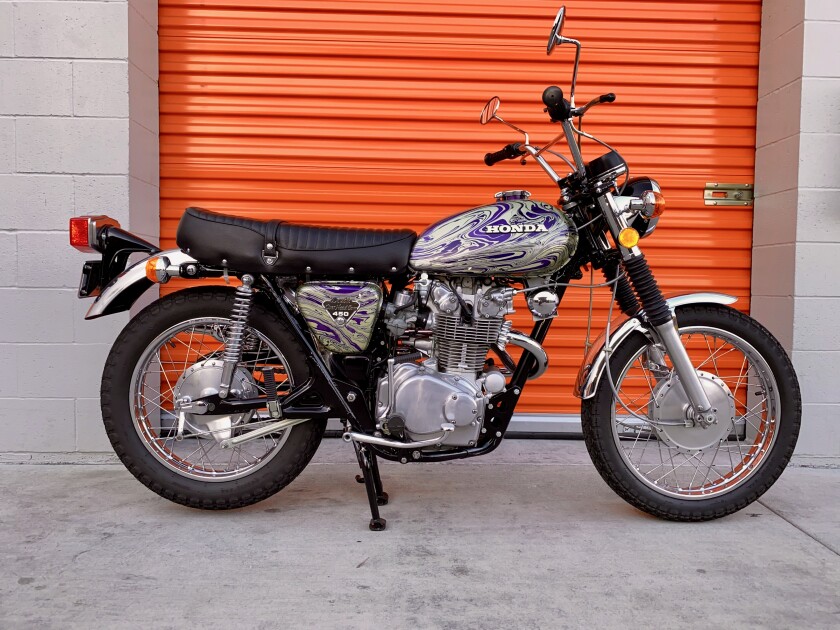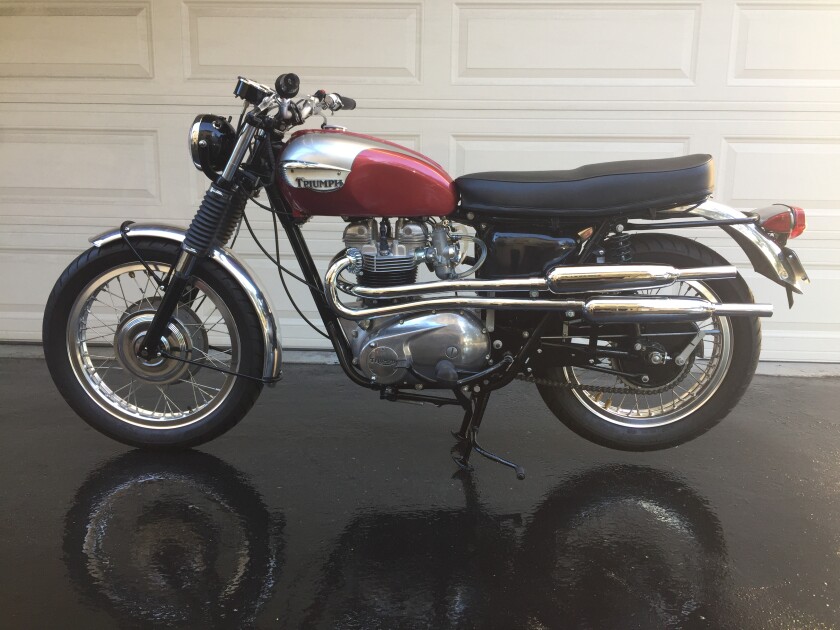Perhaps you’ve seen vintage bikes for sale on TV car auctions or maybe prowling around town. Whether you call ’em vintage, antique or classic, old bikes are popular.
So, what is it about vintage bikes that make some riders choose obsolete technology?
Riding vintage iron can’t be simply about riding motorcycles. If that were true, everyone would ride a new bike. New iron doesn’t break, new always starts, and new won’t leave you roadside without cell coverage.
Posing this “why choose vintage” question to more than 50 collectors, restorers and die-hard old-bike folks generated answers as varied as the personalities of those queried. However, common threads are woven throughout.
Many enjoy the acceptability of vintage bikes. Motorcycle gatherings will often have a narrow group appeal, but a well-turned-out vintage bike gathering will be of interest to most riders.
Some spoke about becoming imprinted by a six- to eight-year span of motorcycles when the machines “simply looked right.” The era, brand, model type, even country of origin are all factors.
The restoration process itself is an important element for many owners. Most enjoy the camaraderie of clubs and garage time. Owner maintainability is also a big draw; call it “pride of ownership.”
So, what does it take to wrangle an old vehicle into reliability?
Are you the type of person who enjoys fiddling with machinery? There is great satisfaction in success and great pain in failure, so patience is important, as is dedication.
Is your dream machine realistic? What about replacement parts, special tools, special skills? Is there adequate documentation to guide your process? Can you rely on local club support?
What will it cost?

The Honda CL450 “Flying Dragon” complete with psychedelic paint.
(Clay BakerThe Baker Collection
)
A 100-point concours restoration requires an open-ended budget, often involving duplicate purchases of multiple used parts, constantly chasing “better.” Refurbishing a clean and dependable rider with new shiny bits is more affordable. The cheapest route might be simply making a survivor bike safe and enjoying the ride.
Kasey Doolin finished a concours restoration Honda CL450 “Flying Dragon.” The Flying Dragon was a Honda factory psychedelic paint scheme, considered unsuccessful at the time, only offered as a dealer option on two models for three years. Its painted trim is extremely rare.
“I happened to see NOS tin for sale on the Internet, and it was kismet from that point. I knew how rare they are. The tank and two side covers were $3,000 in the original Japanese cartons. Once I bought them, my goal was to start from scratch.
“I paid $1,500 for a correct 1972 CL450 in bad shape. I took it down to the frame and had it painted in correct Japanese gloss black paint, not powder coat. I replaced all the wrench-worn fasteners with fresh Japanese Industrial Standards fasteners. Everything on that bike was refurbished or new old stock,” he said. “I bought three used exhaust systems, cut them apart, rewelded, then got them rechromed by the only chrome shop in the country that will do that.
“Parts for a 450 are ridiculously hard to find. When you see anything, you click buy it now,” he shrugs. “So, it’s easy to get deep into a concours bike where judges will demerit a bike for any fault.
Doolin laughs: “I bought the last NOS seat on the planet from the Netherlands for $1,000.”
He displayed the bike at the prestigious Quail concours (in Carmel) and got dinged for the wrong shock absorbers (off a 450CB rather than a CL) and an engine finish that was too bright. Perfection is rarely achieved in concours displays.
Knowing the factory paint is fragile and unrepairable and can’t be duplicated, Doolin prudently sold the bike to a collector.
“I had been storing the tin in a cardboard box in my bedroom closet.”
Gordon Clark is recommissioning a 1949 Harley FL Panhead. Twenty-five years ago, he bought a blue tarp project: a frame, transmission and engine, plus 12 milk crates of parts.
“It’s been a labor of love for the last six years,” he laughs wryly.
Clark prowled swap meets and shows for three years searching for the best period-correct parts. He soon realized that he would have to rely more on the re-pop market, the aftermarket pattern parts made to replicate nonexistent originals. Re-pops often require personal fettling, additional labor to ensure correct fitment and function.
“A lot of the bike is original, so I tried my darndest to get new old stock parts, or just old stock parts. Originality was the goal. Finding people who had the parts or could fix the parts was a bit of a challenge, too.
“But they’re a lot of fun to ride, and you get a bit of notoriety when you pull up somewhere on a vintage bike. No one asks about that new Harley or those sport bikes. … They’ve seen a million of them. But everyone has an old bike question or comment. There’s pride in maintenance.”

This 1966 Triumph Bonneville T120 hot rod maintains its vintage look.
(Joe Michaud)
Originality was not a goal on my four-year 1966 Triumph Bonneville T120 hot rod project. Making a decadelong collection of mis-matched British performance parts play well together was often frustrating. Finding the correct Whitworth threaded components, where they were necessary, was costly and time consuming. The stiction-plagued and leaky front forks were removed and stripped more times than I will admit before I sourced usable parts. An after-market CDI ignition with a no-spark condition caused a long delay. Carburetor tuning for performance cams and a big bore kit was a major issue.
The good points? I learned to solder correctly, (bless YouTube!). I acquired a solder station and scratch-built a new simplified Lucas-free harness correct for LED lighting. All era-appropriate British bullet connectors are crimped and soldered. The color codes of the harness are parts-book correct, retaining a vintage look. And I’ve assembled the machine enough times and gathered enough correct tools to be confident in maintenance.
Is the juice worth the squeeze?
Mike Boyle, an Oregon collector, summed up the reason best: “It’s a small rebellion against the new and the modern. Old bikes make you responsible for everything you do, they even make you pay for doing ‘stupid.’
“But the reward is in that doing, whether making it run or guiding it down the road with your own hand, your own head, your own wits. That is something that’s getting ever scarcer in this electronic age, and whether we recognize it or not, we feel it, some of us more than others.”
So, what’s the best way to acquire an old bike? Depends on your personality. Restore one, if you have time and patience. Pay someone to restore one, if you have deep pockets. Or buy someone else’s well-done restoration. Remember, depreciation bites the original owner more than the second owner.
Auction bikes can be a great value if road-proven — not simply shiny and rushed to the auction block. Mecum Auctions is the big gorilla of motorcycle auctions, and its sales catalog is the stuff of dreams.
Michaud is a San Diego-based motorcycle writer and restorer. Send email to jmichaud@san.rr.com.
"want" - Google News
January 24, 2021 at 09:02PM
https://ift.tt/3iGrIQl
So you want to buy a vintage motorcycle? - The San Diego Union-Tribune
"want" - Google News
https://ift.tt/31yeVa2
https://ift.tt/2YsHiXz
Bagikan Berita Ini















0 Response to "So you want to buy a vintage motorcycle? - The San Diego Union-Tribune"
Post a Comment